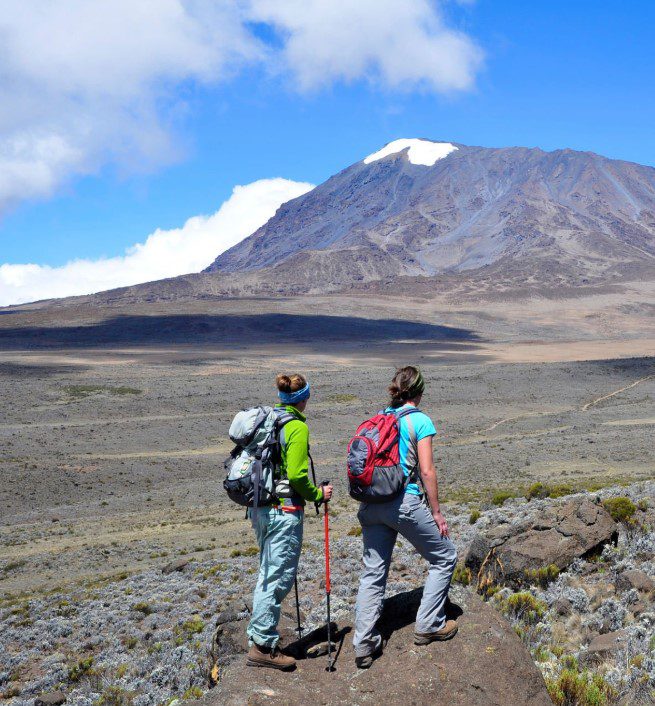How Fit Do I Need to Be for Kilimanjaro?
Mount Kilimanjaro, the highest peak in Africa, stands proudly at 5,895 meters (19,341 feet) above sea level. It’s a destination that calls adventurers from around the globe to challenge themselves and experience the thrill of reaching the “Roof of Africa.” But when it comes to summiting this majestic mountain, one question often looms large for many: How fit do I need to be for Kilimanjaro?

Climbing Kilimanjaro is not an easy feat. It’s a physical and mental challenge that requires proper preparation. However, it is accessible to anyone with the right attitude, determination, and training. If you’ve ever wondered whether you’re fit enough for the climb, this post will help you understand what you need in terms of fitness, what to expect, and how to properly prepare.
Understanding the Challenge
The Kilimanjaro trek is unique in that it doesn’t require technical climbing skills, but rather the ability to hike long distances, often on uneven terrain, with altitude changes that can challenge even the most seasoned hikers. The trek takes between five and nine days, depending on the route, and covers a range of terrains, from lush rainforests to alpine deserts. As you ascend, you’ll be exposed to the effects of altitude, which is why physical preparation plays a crucial role in the success of your journey.
While physical fitness is essential, mental endurance is just as important. The climb isn’t just about strength and stamina; it’s also about maintaining the willpower to push through the tough moments when the going gets tough. In fact, mental toughness often makes the difference between those who reach the summit and those who don’t.
Assessing Your Fitness Level for Kilimanjaro
So, how fit do you need to be for Kilimanjaro? The truth is, you don’t need to be a marathon runner or an elite athlete, but you do need to be in good health and reasonably fit. Here are the key aspects of fitness to focus on:
1. Cardiovascular Endurance
Kilimanjaro demands long days of hiking, often for 6-8 hours, with breaks only for meals and short rests. Having a good cardiovascular base will help you maintain your energy throughout the day and recover quickly during breaks. Your heart and lungs need to be able to support your body during strenuous exercise, especially as the altitude increases.
To improve your cardiovascular endurance, engage in activities such as brisk walking, jogging, cycling, or swimming. Aim for at least 30 minutes of moderate to intense aerobic exercise, three to four times a week, building up to longer durations as your fitness improves.
2. Leg Strength and Muscular Endurance
Your legs will be doing the bulk of the work on Kilimanjaro, so building leg strength and endurance is essential. The trek involves both uphill and downhill sections, and your legs will need to handle the weight of your body and your backpack for extended periods.
Focus on strengthening your quadriceps, hamstrings, calves, and glutes with exercises such as squats, lunges, step-ups, and calf raises. Incorporating uphill walking or hiking with a loaded backpack can simulate the conditions of the trek, helping you prepare for the varied terrain.
3. Core Strength and Stability
A strong core is crucial for maintaining balance and stability during the trek, especially as the path becomes steeper or when you encounter loose rocks and slippery trails. A strong core will also reduce the risk of injury and prevent fatigue.
Incorporate core exercises such as planks, Russian twists, bicycle crunches, and leg raises into your training routine. These exercises will help you build the strength needed to support your body as you ascend and descend the mountain.
4. Flexibility
Flexibility may not seem like a priority when preparing for a mountain climb, but it’s important for preventing injuries, reducing muscle stiffness, and improving overall mobility. Stretching regularly will help your muscles recover after training sessions and ensure your joints are flexible enough to handle the movement required during the hike.
Incorporate dynamic stretching exercises such as leg swings, arm circles, and hip rotations before your training sessions, and static stretching exercises like hamstring stretches and calf stretches after.
5. Altitude Acclimatization
One of the biggest challenges on Kilimanjaro is the altitude. The higher you climb, the less oxygen there is, which can lead to altitude sickness. Symptoms include headaches, dizziness, nausea, and fatigue. To minimize the risk, it’s crucial to allow your body to acclimatize to the changing altitude.
While you can’t exactly replicate the conditions of high altitude during training, you can prepare by hiking at high altitudes, if possible. Otherwise, focus on building your cardiovascular endurance and strength, which will help your body handle the altitude better. Remember, taking the climb slow, following the “climb high, sleep low” principle, and staying hydrated will also help your body adjust.
Mental Preparation
Physical fitness is only part of the equation. Kilimanjaro is as much a mental challenge as it is a physical one. There will be moments when the climb becomes difficult, when fatigue sets in, or when the altitude starts to take its toll. Mental resilience is what will help you push through these tough times.
Stay focused on your goal, break the climb down into manageable sections, and celebrate small wins along the way. Positive self-talk and visualization techniques can also help you maintain the mental strength needed for success.
Training Plan for Kilimanjaro
If you’re planning to summit Kilimanjaro, here’s a general 12-week training plan to help you get in shape for the climb. This plan assumes you already have a basic level of fitness but can be adjusted based on your current condition.
Week 1-4: Base Training
Focus on cardiovascular activities (e.g., brisk walking, cycling, jogging) for at least 30 minutes, three times a week.
Add strength training exercises twice a week, focusing on legs, core, and upper body.
Aim for one longer hike (2-3 hours) each week on varied terrain, including some elevation if possible.
Week 5-8: Build Endurance
Increase the duration of your cardio workouts to 45-60 minutes, four times a week.
Incorporate hill workouts to build leg strength and stamina.
Strength train three times a week, with a focus on compound movements.
Do a longer hike (4-6 hours) each week, ideally with a loaded backpack.
Week 9-12: Peak Training
Increase your cardio sessions to 60-90 minutes, five times a week.
Continue strength training three times a week, with an emphasis on endurance.
Hike once a week for 6-8 hours with a backpack to simulate the conditions of the climb.
Focus on recovery, including stretching and rest days.
Can I Climb Kilimanjaro Without Being Extremely Fit?
While it’s always beneficial to be in good shape, the great thing about Kilimanjaro is that anyone with a reasonable level of fitness can attempt it. Many people of varying fitness levels have successfully summited, from beginners to experienced hikers. The key is to prepare properly, go at your own pace, listen to your body, and be prepared to turn back if the conditions become too difficult.
Final Thoughts
Climbing Mount Kilimanjaro is a life-changing experience that requires proper physical and mental preparation. While you don’t need to be an elite athlete to tackle this mountain, building cardiovascular endurance, leg strength, and core stability will set you up for success. Mental resilience and the ability to adapt to altitude changes are also critical.
With determination, preparation, and the right attitude, you can achieve the summit of Kilimanjaro and create memories that will last a lifetime. So, lace up your boots, start your training, and get ready for the adventure of a lifetime!





